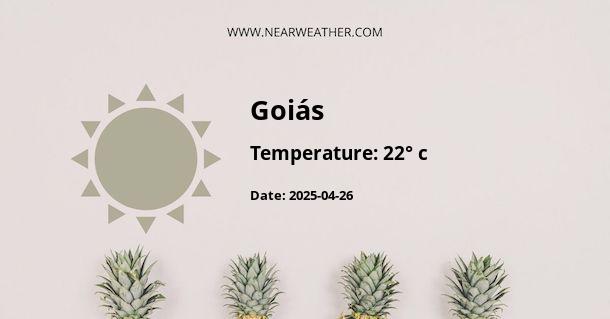Climate and Weather in Goias, Brazil
Goias, located in central Brazil, experiences a tropical savanna climate with distinct wet and dry seasons. The region is known for its diverse landscapes, including the expansive Cerrado biome, rich biodiversity, and unique weather patterns that shape the local ecosystem. Understanding the climate and weather patterns in Goias is essential for residents, tourists, and businesses operating in the region.
Annual Weather Overview
The climate in Goias is characterized by hot temperatures, with distinct wet and dry seasons. The average annual temperature in the region is around 25°C (77°F). The hottest months are typically September and October, with temperatures often exceeding 30°C (86°F). The coolest period occurs from May to August, when temperatures can drop to around 15°C (59°F) at night.
Goias experiences a pronounced wet season and a dry season. The wet season extends from October to March, bringing heavy rainfall and high humidity. The dry season, from April to September, is marked by minimal precipitation and lower humidity levels.
Precipitation Patterns
Goias receives the majority of its annual precipitation during the wet season. The average annual rainfall in the region is approximately 1500mm, with variations across different areas of the state. The Cerrado biome, which covers a significant portion of Goias, influences local precipitation patterns and supports a diverse array of plant and animal species adapted to seasonal changes in rainfall.
Weather Extremes
While Goias generally experiences a consistent tropical savanna climate, the region is not immune to weather extremes. Severe thunderstorms and occasional hailstorms can occur during the wet season, leading to localized flooding and temporary disruptions. Additionally, Goias is susceptible to occasional droughts during prolonged dry periods, impacting agricultural activities and water resources in the region.
Impact of Climate on Agriculture
The climate in Goias significantly influences the state's agricultural production. The wet season provides essential moisture for crop cultivation, particularly for soybeans, corn, and livestock grazing. However, excessive rainfall or drought conditions can challenge agricultural productivity and necessitate adaptive farming practices to mitigate the impact of variable weather patterns.
Tourism and Outdoor Activities
Understanding the climate and weather in Goias is crucial for tourists and outdoor enthusiasts. The dry season offers ideal conditions for exploring the region's natural attractions, including waterfalls, national parks, and wildlife reserves. Conversely, the wet season showcases the vibrant greenery and flourishing ecosystems, attracting nature enthusiasts and photographers seeking to experience the beauty of Goias during the rainy months.
Conclusion
Goias, Brazil, presents a dynamic climate characterized by distinct wet and dry seasons, impacting various aspects of life in the region. The interplay between temperature fluctuations, precipitation patterns, and weather extremes shapes the ecological diversity, agricultural practices, and tourism opportunities in Goias. By understanding and adapting to the local climate and weather conditions, residents and visitors can fully appreciate the natural splendor and resilience of this central Brazilian state.
A - Goiás's Latitude is -15.934440 & Longitude is -50.140282.
A - Weather in Goiás is 22° today.
A - Climate Conditions in Goiás shows broken clouds today.
A - Humidity in Goiás is 84% today.
A - Wind speed in Goiás is 2.99 km/h, flowing at 125° wind direction. today.
